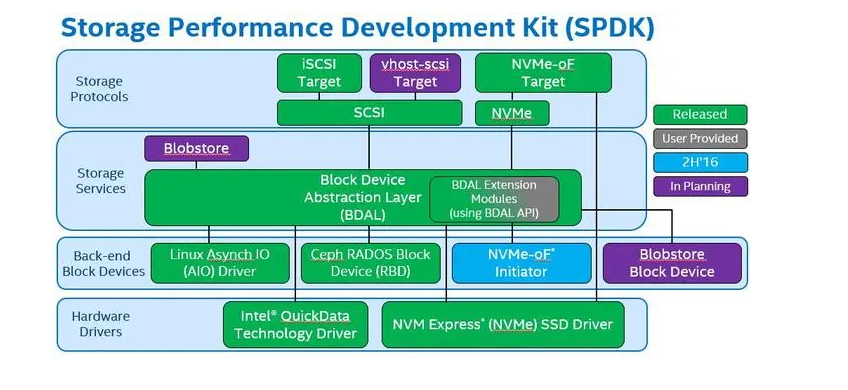以下是使用DPDK框架发送ARP请求消息的C代码示例:
#include <stdio.h>
#include <stdint.h>
#include <inttypes.h>
#include <stdbool.h>
#include <netinet/in.h>
#include <rte_eal.h>
#include <rte_ethdev.h>
#include <rte_arp.h>
#define RX_RING_SIZE 1024
#define TX_RING_SIZE 1024
#define NUM_MBUFS 8191
#define MBUF_CACHE_SIZE 250
#define BURST_SIZE 32
static const struct rte_eth_conf port_conf_default = {
.rxmode = { .max_rx_pkt_len = ETHER_MAX_LEN }
};
static struct rte_mempool *mbuf_pool = NULL;
static void send_arp_request(struct rte_mbuf *pkt_out, uint16_t dst_port_id,
struct ether_addr *src_mac_addr,
struct ether_addr *dst_mac_addr,
uint32_t src_ip_addr, uint32_t dst_ip_addr)
{
struct ether_hdr *eth_hdr;
struct arp_hdr *arp_hdr;
struct rte_arp_ipv4 *arp_data;
// Initialize Ethernet header
eth_hdr = rte_pktmbuf_mtod(pkt_out, struct ether_hdr *);
ether_addr_copy(src_mac_addr, ð_hdr->s_addr);
ether_addr_copy(dst_mac_addr, ð_hdr->d_addr);
eth_hdr->ether_type = htons(ETHER_TYPE_ARP);
// Initialize ARP header
arp_hdr = (struct arp_hdr *)(eth_hdr + 1);
arp_hdr->arp_hrd = htons(ARP_HRD_ETHER);
arp_hdr->arp_pro = htons(ETHER_TYPE_IPv4);
arp_hdr->arp_hln = sizeof(struct ether_addr);
arp_hdr->arp_pln = sizeof(uint32_t);
arp_hdr->arp_op = htons(ARP_OP_REQUEST);
// Initialize ARP data
arp_data = (struct rte_arp_ipv4 *)(arp_hdr + 1);
ether_addr_copy(src_mac_addr, &arp_data->arp_sha);
arp_data->arp_sip = src_ip_addr;
ether_addr_copy(dst_mac_addr, &arp_data->arp_tha);
arp_data->arp_tip = dst_ip_addr;
// Send packet
int sent = rte_eth_tx_burst(dst_port_id, 0, &pkt_out, 1);
if (sent < 1) {
rte_pktmbuf_free(pkt_out);
}
}
int main(int argc, char *argv[])
{
int ret;
// Initialize DPDK EAL
ret = rte_eal_init(argc, argv);
if (ret < 0) {
rte_exit(EXIT_FAILURE, "Error initializing DPDK EAL\n");
}
// Create memory pool for mbufs
mbuf_pool = rte_pktmbuf_pool_create("MBUF_POOL",
NUM_MBUFS,
MBUF_CACHE_SIZE,
0,
RTE_MBUF_DEFAULT_BUF_SIZE,
rte_socket_id());
if (mbuf_pool == NULL) {
rte_exit(EXIT_FAILURE, "Error creating mbuf pool\n");
}
// Configure and initialize one port
uint16_t nb_ports = rte_eth_dev_count_avail();
if (nb_ports < 1) {
rte_exit(EXIT_FAILURE, "Error: no Ethernet ports found\n");
}
uint16_t port_id = 0;
struct rte_eth_conf port_conf = port_conf_default;
ret = rte_eth_dev_configure(port_id, 1, 1, &port_conf);
if (ret < 0) {
rte_exit(EXIT_FAILURE, "Error configuring Ethernet port\n");
}
ret = rte_eth_rx_queue_setup(port_id, 0, RX_RING_SIZE,
rte_eth_dev_socket_id(port_id),
NULL,
mbuf_pool);
if (ret < 0) {
rte_exit(EXIT_FAILURE, "Error setting up RX queue\n");
}
ret = rte_eth_tx_queue_setup(port_id, 0, TX_RING_SIZE,
rte_eth_dev_socket_id(port_id),
NULL);
if (ret < 0) {
rte_exit(EXIT_FAILURE, "Error setting up TX queue\n");
}
ret = rte_eth_dev_start(port_id);
if (ret < 0) {
rte_exit(EXIT_FAILURE, "Error starting Ethernet port\n");
}
// Get source MAC address
struct ether_addr src_mac_addr;
rte_eth_macaddr_get(port_id, &src_mac_addr);
// Build ARP request packet
uint32_t src_ip_addr = IPv4(192, 168, 1, 2);
uint32_t dst_ip_addr = IPv4(192, 168, 1, 1);
struct rte_mbuf *pkt_out = rte_pktmbuf_alloc(mbuf_pool);
if (pkt_out == NULL) {
rte_exit(EXIT_FAILURE, "Error allocating mbuf\n");
}
send_arp_request(pkt_out, port_id, &src_mac_addr, ðer_broadcast,
src_ip_addr, dst_ip_addr);
return 0;
}
在此示例中,我们首先初始化DPDK环境并创建一个内存池用于存储mbuf。然后,我们配置和初始化一个网络端口,并获取其源MAC地址。接下来,我们构建一个ARP请求消息并使用DPDK的rte_eth_tx_burst函数发送它。最后,我们释放该mbuf并退出程序。
请注意,此示例仅发送一个ARP请求消息。在实际应用中,您可能需要创建一个消息队列来处理多个请求,并使用DPDK的rte_eth_tx_burst函数批量发送它们。





















